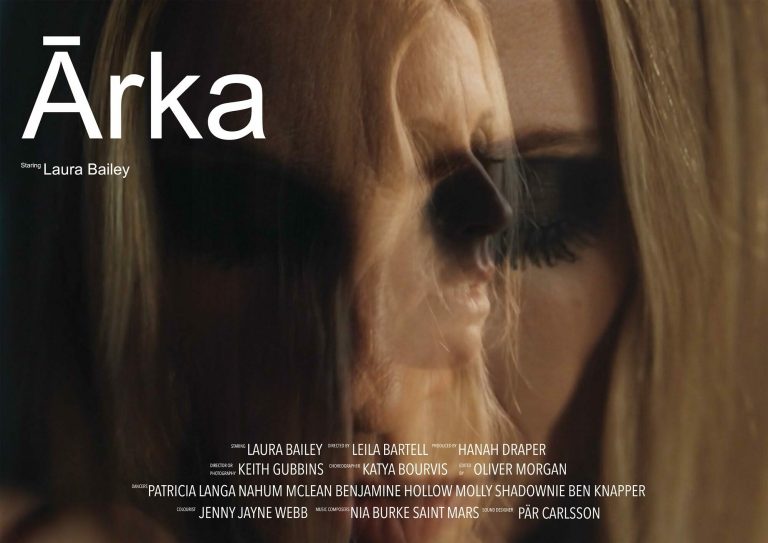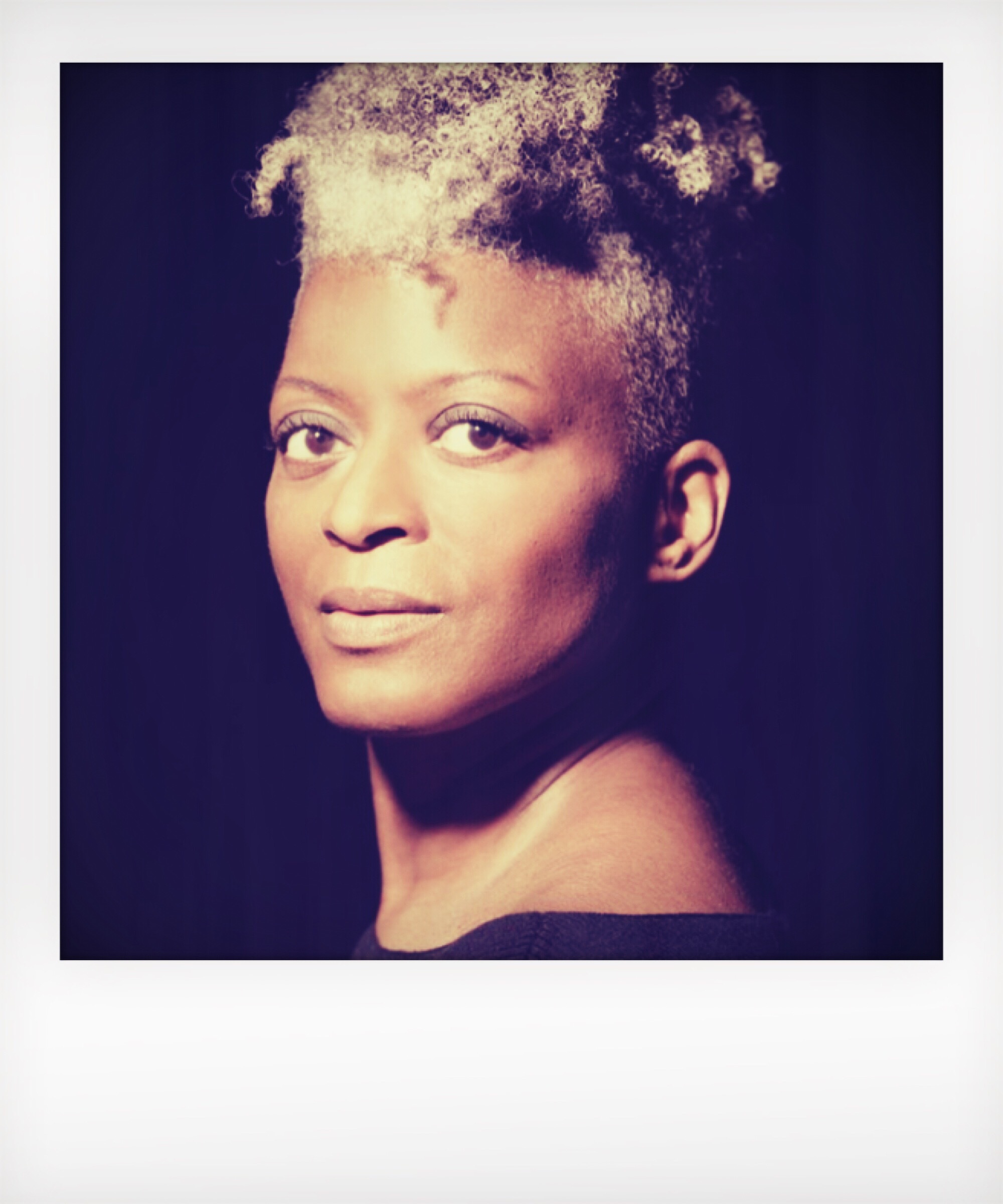
Ārka
Updated: 2021/07/12
- Author
- Olivia Gagan
OLIVIA GAGAN: Leila, what was in your mind when you were first coming up with Ārka? What ideas were you wanting to explore?
LEILA BARTELL: I really wanted to create a concept about a woman, a person, a timeless character transcending their own limitations, because I think internal obstacles are usually the biggest obstacles that we have. That journey of transcending limitations within is an idea that anybody can relate to, and it's not bound to time or space.
We wanted to have an abstract feel, although I always feel it is important to have a narrative, even if it's an abstract piece. Ārka’s theme of transcendence is something that I believe in, and I wanted to express it through dance and sound design.
Could you tell me a little bit about the genesis of your working partnership?
LAURA BAILEY: We’re friends, and I'm a long-time admirer of Leila — not just her work in film and photography but also as an artist. I really respected her creative vision, but also her dynamism, her force to make things happen.
Leila came to me and said, ‘I've written this, shall we talk about it?’ In a way, it could have happened as strangers, but we already had a friendship. I’ve relished the chance to perform Leila's vision, which is different to other projects I've done.
Had you danced before?
LAURA: No. The physicality and the movement, and the fear of that was almost part of the driving force. I wanted to be outside my comfort zone. I wanted to explore and see where we could go with that. I wanted to learn from the dancers. I wanted to really surrender. We worked very closely with a brilliant choreographer, Katya Bourvis.
LEILA: For me, Laura is one of those rare people with an incredible mind, so I really wanted to work on a creative project with her. What I found amazing was that she was very happy to go out of her comfort zone. When I wrote this piece, I told her that it was going to be about movement. I remember Laura said, “I’ve not danced before, I don't know how to dance. I'm one of those people that doesn't dance at the party,” or words to that effect. It was great seeing her dive into it with Katya and giving her performance.
We shot in quite gruelling circumstances in an old factory in Wapping in London in December. There was no electricity or heating in this large space, and we had to bring a generator that wasn’t doing all that much. Nevertheless, Laura and the dancers did an amazing job. In post-production, I found that whenever I would err on the side of caution, Laura would come in and encourage me to make the most of the opportunity and push it.
Laura’s creative input from the beginning has already been incredibly valuable and that continued through all stages in our collaboration.
I wanted her to give a raw performance and I think we really achieved that. She's very powerful and has a presence that I wanted to capture.
Could you tell me a little bit more about the heroine of Ārka and her relationship with the dancers? Because I started watching it thinking, the dancers are in control. But then there's a turning point – and she's now wielding power. It would be great to hear a little more about how you envisage her as a woman, and what the relationship is between her and the dancers.
LEILA: Quite often I don't like to explain it, because I really want the viewer to go on a journey of their own. In essence, the dancers are the contents of her consciousness. They're not individually there – they're emotions, states of mind, limitations, the challenges we face. They control her at the beginning, and then there is a struggle which results in her overpowering them or rather transcending them. The drama takes place internally and they're just a representation of her.
The choreography looks difficult. Laura, if you're not a trained or professional dancer, how did you find learning and performing that? It requires a lot of vulnerability to dance in the first place – and then to master quite a complex, very visceral dance style. What is that process like?
LAURA: It's funny, it's akin to the narrative of the film, in the sense that I started with fear and the internal voices of what I can or can't do. I workshopped it with the choreographer, Katya, and the dancers, all very speedily, and in very raw and ad-hoc circumstances. But I loved the process way more than I thought I would. Maybe because it was so out of my comfort zone.
I think it relates to my modelling life, too, of just letting go of the idea of it being perfect and just inhabiting the feeling. And with that kind of relationship with the truth, knowing there's a safety in that. Because it's exposing, but it's also really freeing.
I'm also a very physical person—I'm very in my body, I'm just more of a runner. I quite like the discipline of training and learning anyway, so this was just a new challenge. But also, it's always a privilege to work with experts and trained dancers, who were amazing in their collaboration. That was one of the biggest joys and one of the real privileges of the shoot, to learn from them and experience how generous they were to me, as an amateur in their midst.
I wasn't interested in doing something perfect or pretty or fashionable. If I wanted to go on this journey with Leila, I wanted it to be raw and exposing and different to other things I was doing. And I think that comes across.
You managed to shoot Ārka within a tiny window between lockdowns. Did the past year and all those constraints affect the story at all or the way you told it?
LEILA: The story remained how it was, apart from the location because of lockdown. But in the end, it brought us to an even better location, which we wouldn't have thought of, had the restrictions not happened. So, if anything, those constraints have made things better.
LAURA: Creatively, I have felt very inspired and engaged through this. There’s the challenge and the adrenaline of thinking, we're not going to be beaten by this, we've come this far. There was an amazing feeling on set because it was such a crazy time. I think for anybody doing any creative, collaborative work during the pandemic, even tiny shoots, these things have felt extra precious. We’ve felt lucky just to be able to be working, especially in a team. And we all know how on a film, how many people it takes, even on a short, behind the scenes and working in quite tough conditions. I think it added another layer of edge and determination.
Could you tell me a little bit about the costuming choices as well?
LAURA: Chanel was involved creatively because of my relationship with them, and in my conversations with my friends at Chanel, Leila and I showed them the treatment and said the feel would be quite Gothic. But it's not a fashion film, it's an art film. So, I am wearing Chanel, but it's vintage Chanel. It had the right feeling of... there is an element of transparency, but there's also an element of strength and of timelessness, which we wanted.
Something else that I really enjoyed about this piece is that the heroine appears tormented, she's obviously fighting against something, there’s an interplay between the dark and the light – but she prevails. I think a lot of women on screen, if something bad happens to them, they meet a grisly or a tragic end. Whereas in this piece, she lives. She emerges stronger.
LAURA: Yes, and I love that. I love that idea of transcending the demons. And the crazed me is how I basically feel all the time. But the light-seeking is also how I feel all the time. I think most women, most humans, have that dual pull. We wanted a sense of transcendence and light winning.
LEILA: Exactly. For me, it's about representing a strong woman. As a child, I looked up to my grandmother who truly was a strong person and head of the family. Then my mother, too, has shown incredible strength in various defining moments in her life. I was influenced by that environment in which I grew up. I like to portray women and question what womanhood means.
I was watching the credits, and there's a lot of women crew involved in the piece, including the composer, Nia Burke, and your producer, Hanah Draper.
LEILA: Yes, absolutely. We really had a good collective of women on this film, which is often the case in my films. Obviously, our cinematographer, Keith Gubbins, and sound designer, Pär Carlsson, are people I really enjoy working with as well.
Hanah Draper, who produced it, is another powerful woman who always finds the best solutions and really makes things happen. As Laura mentioned earlier, the circumstances weren't easy. We had to pre-plan everything, and then wait and see what the government was going to say on Covid rules. But despite that, it was a very flexible and adaptive process at all stages with the entire team.
LAURA: The intensity of the very short rehearsal period that I had with Katya, working from Leila's notes and story, meant there was an intimacy and trust created between us pre-filming that really was important for the process – which hopefully translated to the atmosphere of the shoot. I'm super sensitive to how the whole thing feels when shooting, maybe more so from working on both sides of the camera now. It could be as simple as just wanting people to be heard and feel safe and to feel like their voices are a part of the creative process. That's everyone – the hairdresser, the makeup artist, the caterers, the assistants. It all serves to support and nourish an atmosphere of creativity. This is how I love to work.
What are your plans for Ārka? Where do you want it to go? And who do you want to see it?
LAURA: I think we're both super ambitious for people to see it and to share the work. But we also know that we're working and living in a time where we can control quite a lot of that ourselves. Personally, I'm just dying to go to see a film, any film, in a cinema. I love the idea that we might do something small for friends on a big screen. I've always loved the idea of the film-before-the-film, so maybe we can show it before a feature.
I also think what this time has taught me is that everything is very much step-by-step. We want to honour every step of the process. We want people to be moved by it and to ask a few questions.
LEILA: The idea of honouring every step of the process resonates with me because the project is not finished when it’s delivered. Therefore, it would be wonderful for people to see it because I think it can cause people to reflect, have questions, and complete its narrative for themselves.
Related Articles

Rashunda Tramble

Liberty 150 x150 curated by Leith Clark: The Founder Interviews

Liberty 150 x150 curated by Leith Clark: The Founder Interviews

Liberty 150 x150 curated by Leith Clark: The Founder Interviews



